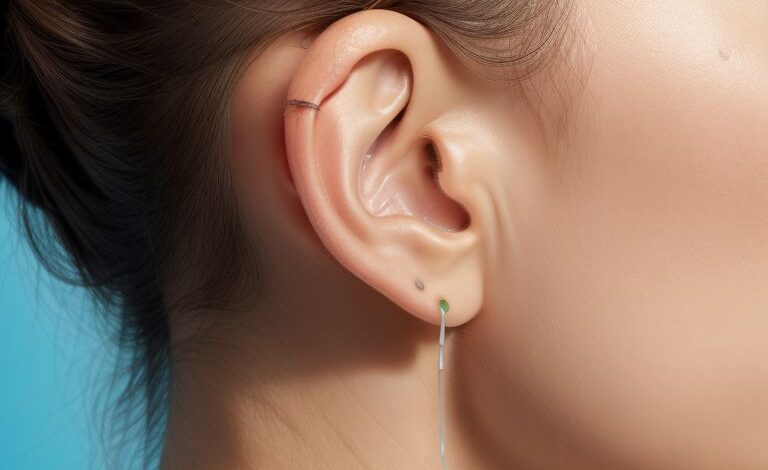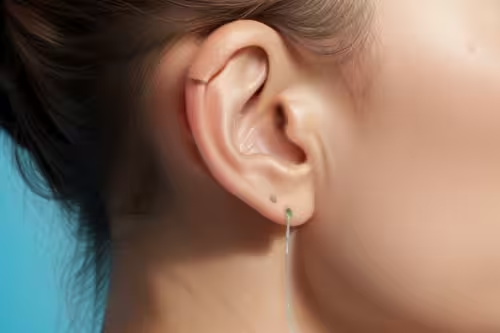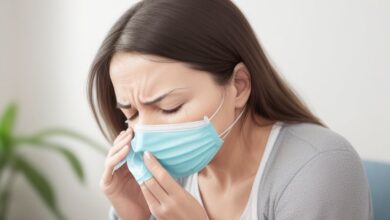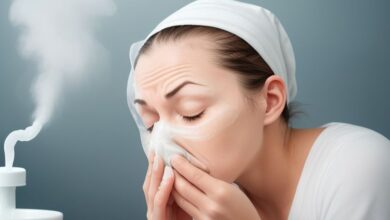
Pimple Inside Ear: Causes, Treatment, and Prevention
Have you ever had that annoying feeling of a small bump inside your ear? Yep, a pimple inside the ear can be surprisingly common, though it's not something people often talk about. It can be uncomfortable, painful, and even disrupt your hearing. Whether it’s a minor nuisance or a larger issue, understanding what causes these ear pimples, how to treat them, and ways to prevent them can save you from discomfort.
In this guide, we’ll dive into everything you need to know about pimples inside the ear, why they happen, and how you can manage them effectively.
What is a Pimple Inside the Ear?
Just like pimples on your face or body, a pimple inside your ear forms when a hair follicle or pore gets clogged with oil, dead skin cells, and bacteria. However, pimples inside the ear may feel more intense due to the sensitive nature of the ear canal and surrounding areas. Ear pimples can develop in various spots such as the outer ear, the ear canal, or even behind the ear.
These pimples can vary in size and severity, and some may go unnoticed unless they grow larger or become inflamed, which can lead to pain and even temporary hearing issues.

Causes of Pimples Inside the Ear
There are several reasons why pimples might appear in or around your ear. Understanding the root cause is key to both treating and preventing them.
1. Clogged Pores
Like pimples anywhere else on the body, ear pimples result from clogged pores. Your skin naturally produces oil, known as sebum, which helps to keep it moisturized. But when too much oil is produced, it mixes with dead skin cells and dirt, leading to blocked pores. The ears are no exception to this process.
2. Earwax Build-up
Though earwax is crucial for protecting the inner ear from bacteria, dirt, and other harmful particles, excessive earwax build-up can create an environment ripe for bacteria growth, increasing the risk of pimples.
3. Hormonal Changes
Hormonal changes, especially during puberty, pregnancy, or menstrual cycles, can lead to an increase in oil production. This makes teenagers and young adults more susceptible to pimples, even in unusual spots like the ear.
4. Poor Ear Hygiene
Cleaning your ears too much or too little can both contribute to pimples. Over-cleaning can strip your ear of necessary protective oils, while under-cleaning can leave dirt, oil, and bacteria inside your ear, clogging pores and leading to breakouts.
5. Using Dirty Earbuds or Headphones
We put our earbuds and headphones in our ears almost daily without a second thought. However, these devices can harbor bacteria, especially if they aren’t cleaned regularly. When you insert dirty earbuds into your ears, it can transfer bacteria and oil to the skin inside your ear, leading to pimples.
6. Allergic Reactions
Sometimes, ear pimples can develop as a result of an allergic reaction to hair products, skincare products, or even certain metals in earrings. These substances may irritate the skin, causing breakouts or swelling in and around the ear.
Symptoms of a Pimple Inside the Ear
It’s not always easy to spot a pimple in your ear, but there are common signs that can indicate you’re dealing with one:
- Pain or Discomfort: Ear pimples, particularly those in the ear canal, can be painful due to the sensitive skin in the area.
- Swelling: If the pimple is large, it may cause noticeable swelling around the ear.
- Hearing Impairment: A severe or swollen pimple can sometimes obstruct the ear canal, leading to temporary hearing difficulties.
- Itching: Before or after the pimple forms, you may experience itching in the ear.
Treatments for Pimples Inside the Ear
Although ear pimples can be annoying and painful, they are usually easy to treat at home. Here are some effective treatment methods:
1. Warm Compress
A simple and effective remedy is applying a warm compress to the affected area. The warmth helps to open up the pores, encouraging the pimple to drain and heal faster. Just soak a clean cloth in warm water, wring it out, and gently press it against the ear for about 10-15 minutes.
2. Over-the-Counter Creams and Ointments
Many topical treatments that work for facial acne are also effective for ear pimples. Benzoyl peroxide or salicylic acid can reduce inflammation and clear up the breakout. Apply these products to the pimple using a cotton swab, being careful not to get the product inside the ear canal.
3. Tea Tree Oil
For a natural remedy, tea tree oil is a powerful antibacterial and anti-inflammatory agent. Dilute a few drops of tea tree oil with a carrier oil like coconut or olive oil and apply it to the pimple using a cotton swab. The tea tree oil will help kill bacteria and reduce inflammation.
4. Avoid Popping It
It’s tempting, but don’t pop a pimple inside your ear. Not only can popping it lead to more pain and potential infection, but it could also push bacteria deeper into the skin, worsening the problem. Let it heal naturally with the help of other remedies.
5. Consult a Doctor
If the pimple is large, painful, or doesn’t heal after home treatments, consult a doctor or dermatologist. They may need to drain the pimple professionally or prescribe stronger medication, such as antibiotics, if an infection is present.
Prevention Tips for Pimples Inside the Ear
Taking some simple steps can help you avoid getting pimples inside your ear in the future:
- Keep Your Ears Clean: Gently clean your ears using a cotton ball or washcloth. Avoid using Q-tips or sharp objects that can damage the ear canal.
- Sanitize Earbuds and Headphones: Clean your earbuds and headphones regularly to prevent bacteria build-up.
- Maintain Good Hygiene: Wash your hands before touching your ears or putting in earbuds to prevent the spread of bacteria.
- Watch Your Diet: A diet rich in vegetables and low in processed foods can help reduce the occurrence of acne, including pimples in the ear.
- Avoid Hair Products Near Ears: When using hairspray, gels, or other hair products, shield your ears to prevent these substances from clogging the pores.
When to See a Doctor
While most ear pimples are harmless and go away on their own, there are cases when professional help is necessary. You should see a doctor if:
- The pimple persists for more than a week without improvement.
- There’s severe pain or swelling that affects your hearing.
- The pimple becomes infected, leading to increased redness, pus, or a foul odor.
- You have a history of recurring pimples or cysts in the ear.
A doctor can prescribe medication or suggest other treatments to help clear up the infection quickly.
Final Thoughts
A pimple inside the ear is typically a minor issue, but it can be quite uncomfortable. By understanding the causes and symptoms, and by following simple treatment methods and prevention tips, you can manage and avoid this common issue. Remember, if the pimple becomes too painful or refuses to heal, it’s always best to consult a healthcare professional.



